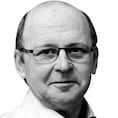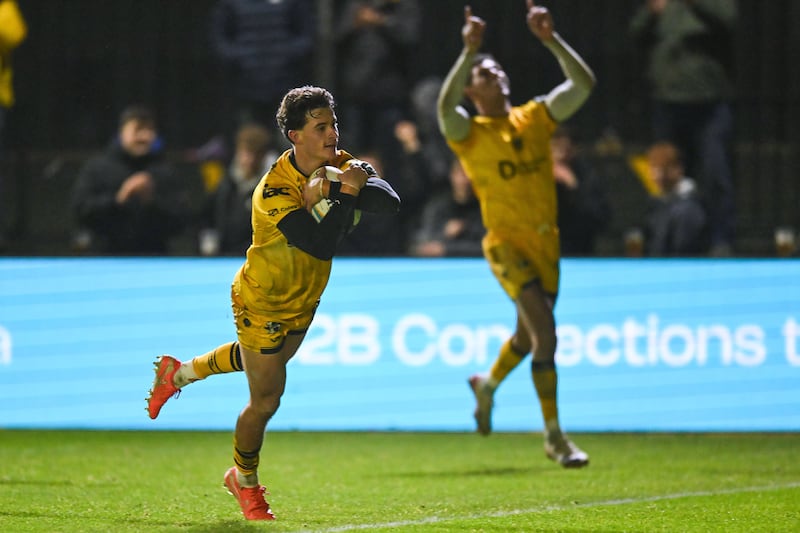A conversation with ESB chief executive Paddy Hayes is just as much about decarbonisation as it is about electricity.
“I’d love to see a situation in the future when the electricity system is completely decarbonised, and anybody wanting to connect, whether it’s for social reasons or enterprise activity or anything that’s reasonable, are able to do that in a timely and affordable fashion. That’s the nirvana,” he says.
Decarbonisation is the over-riding task for coming decades but he is conscious of how hard the energy crisis was for ESB customers. “We were really pleased that we were able to bring prices down last November and in March. It’s a really competitive retail market at the moment, which is good for customers.”
It also decided to forgo residential profits (€55 million for 2022) in favour of supports aimed at those struggling with their bills. Wholesale gas prices remain at an elevated level compared to three years ago albeit less elevated and less volatile than over the course of 2022 and 2023.
READ MORE
It is easy to discern Hayes has a reflective personality and a strong engineer mindset. Pushing on – in leading the State’s biggest utility since June 2021 – seems to matter most rather than pursuit of the limelight; no room for large ego.
Some 10,400 jobs were directly or indirectly supported by ESB in 2022, equivalent of 0.5 per cent of total Irish employment, an independent evaluation it commissioned from Frontier Economics found. It has invested €14 billion in Ireland across its energy and other businesses from 2006 to 2022.
It is undergoing its largest transformation since its foundation, with a target of decarbonising the electricity sector by 2040. That, Hayes says, is critical to providing clean energy for other sectors with a view to climate neutrality by 2050.
A multitude of challenges arise from this but all can be met on time, he adds – acknowledging no one company can achieve what’s required.
A recent Climate Change Advisory Committee review noted emissions from electricity were at their lowest level last year since records began in 1990. “There’s been an enormous mobilisation and engagement by the whole of the electricity sector to get us to that stage,” he says.
That has come at a time of increasing demand.
Hayes recalls a workshop with his predecessor Pat O’Doherty teasing through the dimensions of the climate change challenge as a key inflection point for him, when he realised the key role electricity could play in addressing the issue. It struck him that reducing carbon in electricity “could also have a massive impact on carbon from heat and transport and other parts of the economy”.
Hayes dismisses suggestions ESB was slow to pivot to decarbonisation, pointing to momentum “building renewables, while transitioning some of the more carbon-intense generation off the system” including getting out of peat generation. He cites a halving of the carbon intensity of electricity at a time of significant growth, which underpins his optimism about the future.
He notes the “quiet revolution of solar” with 1,000MW connected to the grid, about 16 per cent of the system peak. In microgeneration, more than 90,000 people have connections with ESB Networks. “[It] is really super to see customers getting involved in the energy transition for themselves,” he says.
ESB is working with Bord na Móna on a 70MW solar farm at Timahoe North, Co Kildare, while six other solar projects (300MW) are in build. “The technology has come on in leaps and bounds ... that’s one of my sources of optimism addressing the climate crisis.”
A similar trend with grid-scale battery storage is likely, he says, with ESB having some 750MW on the system. It has storage projects in Dublin and Aghada, Co Cork. “We can charge up for storage in the night time when there’s a lot of wind and not a lot of demand ... it’s increasingly clean electricity, and then we can give it back to the system when the system demand is high.”
Six years ago, the only electricity storage was at Turlough Hill in Co Wicklow, which is marking 50 years this year. Its continued role in managing system peaks is a tribute to the ESB’s vision, he believes, even more so as it is now displacing what would otherwise be higher carbon electricity.
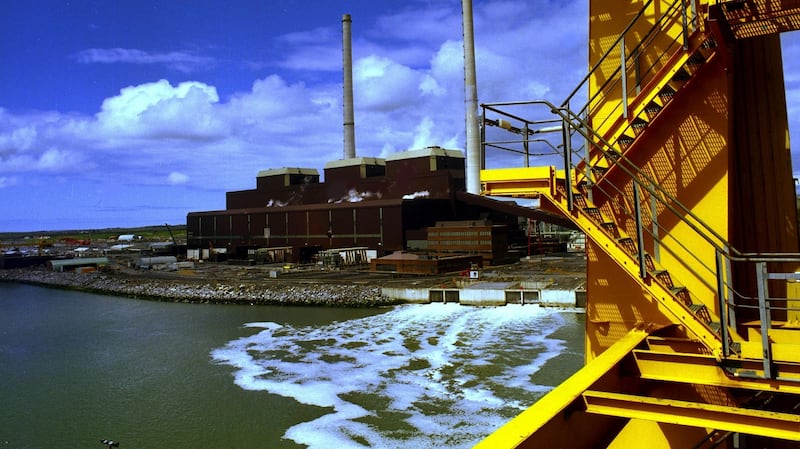
Last year, ESB greatly reduced power running from Moneypoint, the Co Clare-based anchor of its fossil fuel generation system since 1985, which delivered a chunk of reduced emissions.
“We’re determined to take Moneypoint off coal by 2025. So it’s in its last full year of being available ... we’ve agreed [with the Government] that we’ll make it available then for the following four years or so ... 900MW of capacity is important to hold as an insurance policy for energy security.”
Moneypoint is on a green transition path. This began with building an on-site wind farm and a synchronous compensator which helps the grid to cater for more renewables. A blueprint for the Shannon estuary site will go to Clare Co Council and An Bord Pleanála next year, with plans to develop two floating wind farms generating 1,200MW off Loop Head with Ørsted – its main partner in offshore development.
Moneypoint will have turbine manufacturing/assembly capability and some backup open cycle turbines with potential to use hydrogen or biofuels. “Our blueprint will include some hydrogen capability there, on the assumption that technology can develop.”
Hayes acknowledges that building infrastructure is not easy any more, extolling the merits of changing existing sites where there is already a footprint, which communities appreciate. At Poolbeg in Dublin, a new energy hub includes a €300 million battery storage facility, as well as aeroderivative and gas turbines – the two giant chimneys of its old power station are about to get a facelift with paint options being tested at present.
There is no rowback on green hydrogen though some recent analysis questions its viability. Its use is likely to be “primarily for storage”, Hayes says.
ESB is working with Bord Gáis Energy and dCarbonX on Project Kestrel, which envisages redevelopment of decommissioned gas reservoirs at the Kinsale Head field – ultimately for green hydrogen storage.
Offshore wind is going to help deliver up to 80 per cent of renewable electricity. The final step to full decarbonisation is going to be long-term energy storage “so we can use the surplus of clean electricity that we are going to have at certain times, convert it into something that we can then give back to the system as clean electricity”, he says.
This is where, he believes, long-term hydrogen may come in, but it could be ammonia, biomethane or something else. ESB is evaluating potential technology, having acquired a fuel cell and hydrogen electrolyser in Aghada.
While 20 years ago Ireland was criticised for not pursuing wind energy early enough, he says ESB has been able to learn from experiences of manufacturers and to install turbines at good value.
Its offshore portfolio is building, especially off Scotland’s east coast where Neart na Gaoithe, a 450MW facility being built with EDF, has about half of its turbines in place, while it is seeking to finalise terms for Inch Cape, an 1,100MW wind farm (with Red Rock Power) set to become Scotland’s largest source of renewable power.
Planning permission for the 375MW Oriel wind farm being built with Parkwind off the coast of Louth has been submitted. It has to find a different route to market having missed out in the ORESS-1 auction. “I think it’s a great project ... I’m really hopeful we’ll be able to find an off-taker who’s interested in taking [its] clean electricity,” Hayes says.
The ESB chief also underlines the importance of ongoing onshore wind development. ESB is working with Coillte through a joint venture company, Future Energy Ireland, while onshore projects in Northern Ireland and other parts of the UK are progressing.
Hayes welcomes the Government’s regime to harness offshore wind capabilities and designating areas for development through DMAPs – sequencing fixed-bottom turbines in the east and south coast, with the west coast destined for floating. He hopes a DMAP for the west is finalised in a timely way.
“Floating is happening and developing ... we believe that there is the capability off the west coast and we’re optimistic about being able to harness it.”
A diverse renewable energy mix is likely, he predicts, because different technologies are beneficial in different places and could even include wave energy. For Ireland, it is unlikely to include nuclear, because the build-up of offshore wind resources is likely to be best complemented by energy storage.
Eyes must remain focused on energy security with temporary generation coming on stream in North Wall, Dublin, and Shanonbridge, Co Offaly.
We meet at ESB’s headquarters on Fitzwilliam Street, Dublin, where the ESB control centre is commissioning aeroderivative gas turbines (similar to jet engines with the ability to fire up rapidly). A contract for a 300MW open cycle gas turbine for Poolbeg is also being signed – just in case investments “that you hope will almost never run but are available to run should the system get tight”.
In parallel, ESB Networks is making significant investments to be able to connect up everybody’s solar and storage – it connected 34,000 homes and 5,000 businesses last year. It has more renewables connected to the system than Ireland’s peak demand currently. “Clearly, they’re not all available always at the same time, but it just gives you an indication of how much renewables capacity is out there,” he says.
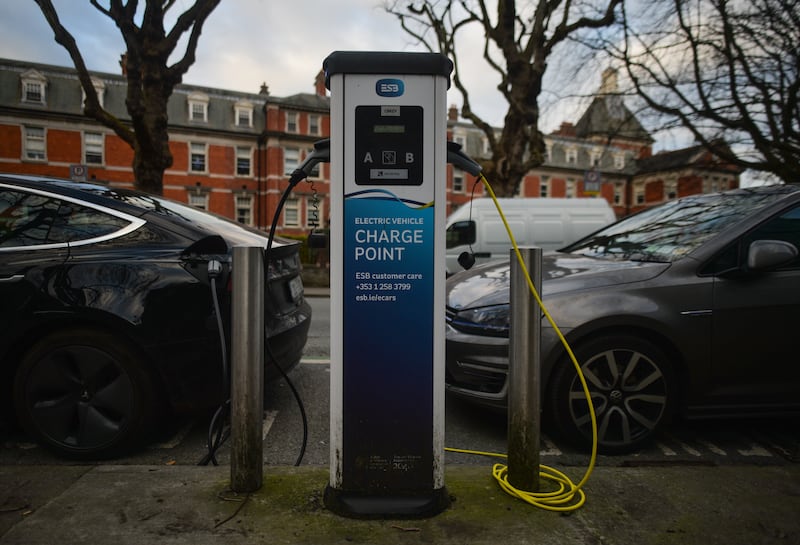
On electric vehicles, he says technological advancements combined with enhanced range and charging speeds is accelerating uptake.
“Clearly on day one, you don’t put in the infrastructure that’s needed for a million electric vehicles ... So the infrastructure just has to develop in tandem with development of the demand, and they’re always going to be times where okay, it’s got to be a little bit extra.”
ESB ecars is ensuring wider availability of fast chargers while supporting the Zero Emission Vehicle Initiative to maximise ease of “destination charging”. EV sales have stalled recently, but he notes 48 per cent of new cars purchased in Dublin last year were EVs.
For the average person or business getting a grid connection is now a fairly straightforward process, though parts of the system have more capacity than others, he says. There’s a lot of investment needed, however, to increase capacity to be able to take lots of different distributed energy sources. There will be “an ongoing challenge to develop grid capacity appropriately and efficiently ... in a way that’s affordable and to match the growing requirement for renewable energy”.
State-owned grid operator EirGrid has done “a world leading job” in terms of creating the technical environment where the grid can handle more renewables than anybody else, and its proven record of delivery will continue, he predicts.
On the pace of decarbonisation, he notes climate targets in the past dismissed as being unachievable, yet the 2020 target of 40 per cent of electricity from renewables was achieved and built upon.
Capital investment in clean energy has climbed to €2 billion this year. Meanwhile ESB Networks is working with the regulator on its next five-year plan with significant further funding likely. Its three main entities – the generation business; ESB Networks and retail arm Electric Ireland – are regulated and run separately.
The key overall lever is hiring more people and building supply chains. Already there are 1,000 people more in the organisation since before the pandemic. It now employs 76 nationalities. With big demand for network technicians, its apprenticeship programme is taking in 100 people a year, 26 of whom were women this year.
Equally, there is a need for more engineers, scientists and people with maths and digital skills, he says.
Infrastructure delays exist throughout much of Europe and the US, along with “growing pains” in manufacturing and supply chains, Hayes says. “So it’s really important to engage with communities and local authorities to make sure people understand why the infrastructure is going there and why that’s the best place for it and how important it is.”
Compounding matters in recent years, projects got stuck between having received a contract from an awarding party (such as a Government) which fixes their price, and being unable to fix input costs at a time of inflation and higher interest rates. This inevitably meant increased costs and delays but Hayes says this is being resolved. The ESB is fortunate in having been around for a long time with good relationships, but this needs to be reinforced by “a steady drumbeat of projects coming through”.
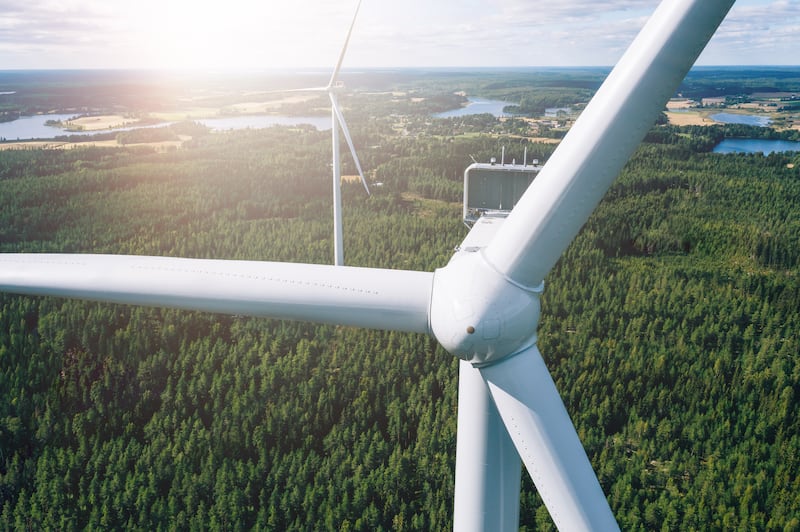
Ireland is trying to do likewise with renewable projects, with a 1,600MW a year target but is currently falling short of that. Helping matters, however, is new planning legislation and improved resourcing of the planning system, he adds.
Asked if infrastructure delays, planning problems and grid issues risk derailing net zero by 2040, he says: “It’s a challenge ... I would always say look at how far we have come; look at what we have achieved. And look at our determination and mobilisation of people and organisations to get there. We’re driving on full scale at that. I don’t have any doubt that we’ll do it here but it’s hard.”
This has to be achieved when demand is expected to double, though there is the real prospect of smart technology enhancing efficiency while maximising renewables.
As for speculation Ireland will soon be a big energy exporter, he believes effort should concentrate on decarbonisation and providing clean electricity throughout the economy first. “That’s going to take us until 2040.”
The ESB will play its part in helping sustain economic growth in line with forecasts by ensuring matching capacity in an efficient and timely fashion, he says, notwithstanding long supply chains and that building infrastructure takes time. “There can be issues from time to time, from location to location, but I’d be confident the electricity sector will be able to deliver that.”
Hayes places great store in meticulous planning for what is “a really long-term business”, while every investment coming before the ESB board evaluates impact on emissions, ensuring “we’re absolutely focused on delivering by 2040″.
What’s important to him personally is instilling a clear sense of purpose in staff, “helping people make sense of that in terms of how they can contribute and make a difference to the organisation, to climate change and for customers”.
“The other thing is a touch of optimism in the middle of all of that. Because it’s hard. But there’s a tough but tangible pathway here.”
- Sign up for Business push alerts and have the best news, analysis and comment delivered directly to your phone
- Find The Irish Times on WhatsApp and stay up to date
- Our Inside Business podcast is published weekly – Find the latest episode here
